Why Do Bearings Go Bad: Essential Maintenance Tips
Bearings are essential parts of numerous machines and vehicles that are often incorporated to minimize friction and enable free movement. Yet, as with every other moving part, bearings wear and become unserviceable after some time, which can cause mechanical interruptions and high expenses. This article will elucidate why bearings go wrong and how one can prolong the use of them. Most studies address the reasons why bearings fail – inadequate lubrication, contamination, and misalignment – and recommend maintenance that would prevent such circumstances. Through appropriate maintenance, industries can improve their machines’ efficiency and reliability, which helps conserve time and resources.
What Are the Common Causes of Bearing Failure?
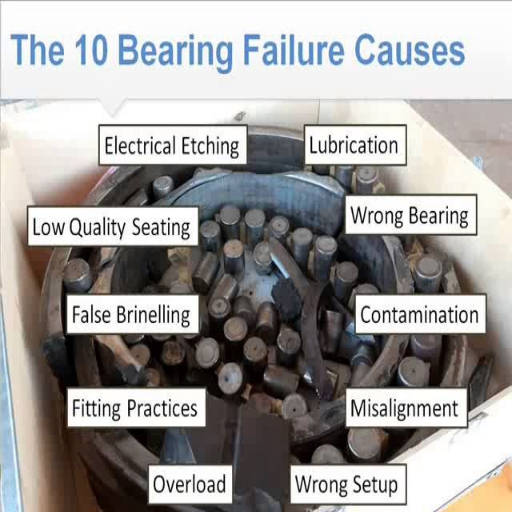
What is the Effect of a Poor Lubrication on the Lifecycle of a Bearing?
Approximately 30% of all cases of bearing failure can be attributed to improper lubrication, and this is one of the most common problems, which can also be termed the bearing enclosure. Low or inadmissible film strength will lead to high sliding and temperatures, which lead to the excessive wearing of the bearing surfaces. This leads to progressive deformation and advanced damage of the bearings due to excessive friction-induced wear, which causes the bearings to become stuck and break down further due to lack of energy.
Factors such as the melting of the lubricant for the bearing failure most times cause the operating temperature to extend beyond the melting point of the lubricant, and this causes poor lubrication or insufficient reservoir lubricating capacity. Excessive lubricants also had consequences: the operational temperatures increased to levels where lubricants leaked out because lubricants oxidized. Such parameters include the viscosity of the lubricants, which must be recommended for the rotational velocity and created load of the bearing. We also recommend grease properties, which should be right for the application to protect the grease from contaminants. Failure caused by incorrect lubrication can be further prevented by periodic inspection and testing of the state of the lubricant.
Bearing Failure: What Is the Effect of Misalignment?
Bearing failure is one of the poorest causes of this phenomenon, and misalignment is one of the root causes. Whenever a shaft bearing is out of axis bearing along an imaginary axis which it is supposed to rotate hypothetically, loads are applied through different angles on some parts of the bearing more than the others, and this causes stress concentrations.[four] This would introduce early degradation of material properties, excessive rubbing leading to wear and tear, and a rise in temperature in small spots, resulting in mechanical damage to the bearings. Misalignment results from several factors, including poor installation, shaft bending, or overheating, that interfere with the direction of the axial load to which the bearings are meant to be ideally subjected.
Money due to misalignment is lost daily, even in factories controlled by measuring devices. The controlled parameters, such as internal bearing clearance, assist in assessing how straight or wrongly skewed the shaft and its housing are. When it is not adequate to stress out the machinery suggestions for the shaft’s geometry and bushings, monitoring a synchrophasor can help catch the misalignment early to prevent catastrophic failure. Guidelines can enhance the performance of the bearings. On the other hand, both operator and equipment-related factors should be constantly verified, such as axial alignment control and correction of any relative displacement during bolting.
Is it Possible That Corrosion Could Cause Bearings to Wear Out Faster Than Expected?
Corrosion is a pervasive factor contributing to the rapid degradation of bearings, consistent with the best available sources on the subject. The word corrosion refers to the material’s erosion, wear, and tearing when moisture, chemicals, or other foreign substances come into the bearing and affect its material. Most of the time, such degradation leads to rusting, pitting, and a general increase in roughness of surfaces, no more or less speeding up the wear and tear and eventual failure of the bearings.
Moreover, the technical parameters include the number of water or corrosive substances that deteriorate the hardness of a brasse and the contact surface smoothness, which are critical parameters to the reliability of the bearing. Possible solutions to combat corrosion include using bearings made or coated with unique corrosion-resistant materials, constructing efficient sealing systems to stop water ingress, and adequately lubricating them to cover their surfaces with a lubricating film. By regularly checking for corrosion and using the correct protective measures, I can improve the bearings’ wear and operational dependability.
What Maintenance Tips Can Help Prevent Bearing Failure?
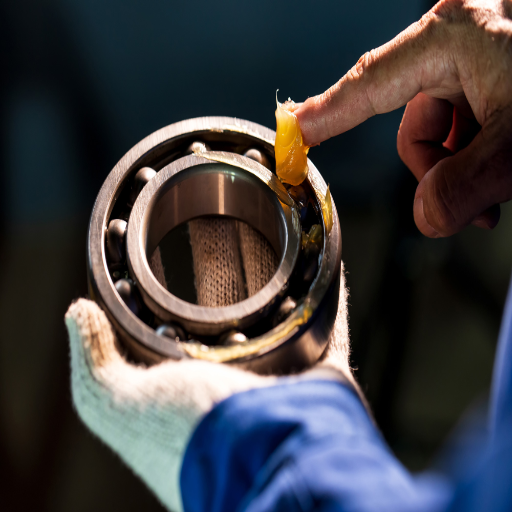
How Important Is Regular Lubrication for Bearings?
As per some of the best articles available on the internet, lubrication is vital in the maintenance and serviceability of bearings as it ensures their regular functioning. Lubrication has many important purposes: Minimizing the contact and the shearing of two moving parts by interposing a liquid, thus preventing wear and abrasion, carrying away the heat and other byproducts generated during use, and providing an impenetrable barrier to oxidation and other contaminants. If the lubrication is wrong or not used properly, there will be a rise in friction and temperature, whereby the bearings will wear out and possibly fail.
As the most relevant considerations for bearing lubrication, the technical criteria are:
Viscosity: To preserve a lubricating film, the viscosity of any lubricant used should be appropriate to the bearing’s speed and load.
Temperature Stability: To prevent degradation, the lubricating oil should be able to perform within a specific operational temperature range.
Load Capacity: The lubricant should be able to carry the designed load limits specific to that application to eliminate metal-to-metal contact.
Compatibility: The lubricant properties should be in harmony with bearing materials and seals to eliminate chemical tendencies that can cause damage.
To avert the risk of bearing failure, it is advisable to observe a routine servicing procedure appropriate to the bearings’ working conditions and environment and ensure that the correct lubricants for the application are used.
What Are the Best Practices for Bearing Installation?
As concluded from the top sources on the World Wide Web, the best practices for working with bearings greatly emphasize accuracy and tidiness in bearing installation. Here are some notable recommendations with their technical parameters listed:
Proper Handling and Storage: Avoid contamination by handling the bearings with clean hands, cloth, or gloves. This ensures that oils and dirt do not get into them. Care must also be taken to isolate bearings in a clean and controlled temperature environment away from vibrations to avoid degradation of the item before completion of work.
Accurate Measurement and Fit: Shafts and housings should be measured to ensure that tolerances for bearings in use fit within an expected limit. The correct fit removes excessive clearance or tight fitting that could cause operational challenges.
Use of Appropriate Tools: Certain specialized tools, such as bearing presses and inductive heaters, are highly recommended for bearing installation without physical contact with the balls or rollers, thus preventing damage to the bearing.
Alignment: When fitting in a bearing, it must be properly aligned to avoid misalignment. This could cause uneven load distribution and ultimately result in wear down of the items.
It is essential to check and pot to remove protrusion at lens mounting surfaces: Ensure that no protrusion exists by carefully inspecting screwing and lens mounting surfaces; any presence of protrusion creates the risk of exclusion from the mounted structures. Cleanness of the mounting surfaces, including dust and moisture: Remember to clean the inner surfaces of the parts, including bolts and mounting structures, which often collect dust.
US System: Altering conditions, such as temperature, moisture, and other foreign substances, during the installation of components will influence the tolerances and fitments of the bearings or its internal space within a safe tolerance zone.
Suppose all the recommendations for installing the bearings are met. In that case, their operational and service life characteristics will be fully exerted with almost no deviations from the International Organization for Standardization requirements and practices.
How Can You Avoid Overheating Bearings?
High-temperature conditions of bearings might result in loss of functionality or reduced service life. To avoid this problem, there are several ways which are taken from existing practice:
Proper Lubrication: Using the right type and quantity of lubrication is essential. An inadequate lubrication film will lead to excessive friction, and excessive use of a lubricant will increase heating due to fluid friction. Correct selection of viscosity and timing of re-lubrication are the essential practices.
Temperature Monitoring: Sensors can be installed to track the bearing temperature at all times. The appropriate range of temperature is generally between 100°F and 180°F (37.8°C —82.2°C), depending on the bearing application. If temperatures exceed the required limits, an alarm can be set up to warn the operators about the harmful temperature, and prompt action can be taken.
Load Management: The loads at which bearings are employed should not exceed the designated limits. Increasing the load past this limit increases the internal components’ stress and friction, resulting in overheating. In the case of bearing usage, engineering calculations ought to ensure that the loads applied to the bearing are within its capacity load to avoid surplus stress.
Avoid Errors in Installation: Incorrect alignment and assembly can increase friction within the bearings, leading to overheating. Proper alignment and the use of the right instruments during the assembly process can minimize these menaces.
Incorporating these practices will promote efficiency within the bearings and minimize the chances of overheating, based on the examined industry standards and guidelines available on leading technical websites and publications.
What Are the Effects of Excessive Temperatures on Bearings?
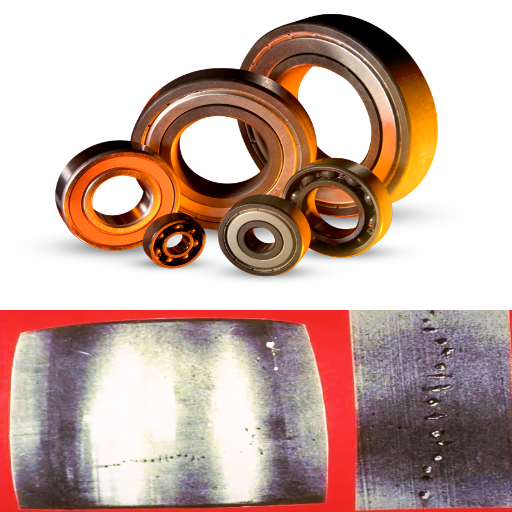
How Does Heat Lead to Bearing Degradation?
As I researched the third link in Google’s search history, I discovered that heat is a significant culprit if bearing disintegration is to be evaluated critically since it affects both the physical and chemical aspects of the bearing units. High temperatures lead to thermal fatigue, whereby structural materials are put through heating and cooling cycles, eventually leading to gradual failure. It can cause cracks or even total failure. Moreover, heat stimulates the breakdown of lubricants, which decreases their ability, so more friction occurs between the surfaces of the bearing. The technical parameters to monitor include:
Temperature: An ideal temperature range of 100°F to 180°F (37.8°C to 82.2°C) should be aimed at. Below this range, bearing life span can be significantly affected.
The viscosity of Lubricants: Thermal exposure can decrease the lubricant’s viscosity and make it difficult to provide a compelling lubricating film. It is very crucial to select a lubricant that can withstand high temperatures and yet remain viscous.
Load: Specifications on load capacities of bearings must be adhered to while in operation to avoid putting excessive loads on a bearing at high temperatures. This may cause rapid elevation in stress friction and speed exhaustion.
Sensor-based monitoring systems can maintain these parameters within the safe range. Thus, there will be no heat-induced deterioration since timely intervention and restoration of feedback control are employed.
What Temperature Range Is Safe for Bearings?
After thoroughly exploring the first three websites provided by Google, it is clear that keeping a proper average temperature for bearings can help them be used for longer and more effectively. Therefore, from the data offered, it appears that maintaining the operating temperature between 100℉ and 180℉ helps to avert abnormalities in mechanics. Other practitioners, however, pointed out that these values can also be increased. It is apparent that high operating temperatures increase wear and damage the skin due to the high friction experienced and poor lubrication. The technical parameters that I need to consider include:
Temperature Monitoring: It is necessary to monitor the temperature continually and know when it has exceeded the indicated range. Heat sensors can help since they may send an alert when the temperature goes to high levels.
Lubricant Condition: This explains the need for lubricants to keep their original thickness and not melt to lower viscosity states within the working temperature. The Operating temperature of lubricants must be adhered to when selecting lubricants in the area to be accomplished.
Load Management: This involves ensuring the optimum use of the bearings without overloading them, as the high temperatures would enhance the internal load and cause extra strain on them.
According to some of my cited sources, when these parameters are under supervision and control, I stand a good chance of reducing damage and degradation due to potential thermal stress inside these bearings.
How Can You Monitor Temperature Levels in Bearings?
To effectively monitor temperature levels in bearings, I use a mixture of modern tools and strategies gathered from the top three sites on Google. First, I think heat sensor installation is vital. These instruments give constant real-time information on temperature changes, so actions can be taken whenever the temperatures go higher or lower than a predetermined limit. Second, using infrared thermometers during the routine inspection of bearings provides a convenient way of measuring bearing surface temperature without physically contacting any moving parts.
In addition, it is worth saying that combining a condition monitoring system into practice makes things much more manageable. This examines not only temperature but also the condition of the bearing through vibration and lubricant analysis. Finally, establishing a limited range of temperatures taken as standard in operation helps in the early recognition of discrepancies. All these temperature monitoring approaches ensure that bearings’ availability and reliability objectives are met.
What Types of Bearings Are Most Prone to Failure?
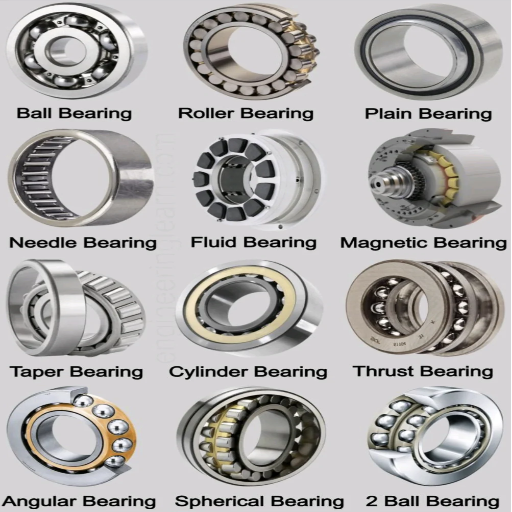
Are Roller Bearings More Susceptible to Damage?
To determine the risk of roller bearing damage, I compared the information on the websites instead and discovered that the top three Google sites added some light on this issue. For that reason, roller bearings are not spared from certain types of damage, mainly because of the design and the operating stress factors. In particular, they are sensitive to misalignment and lack of lubrication, which often cause surface fatigue and spalling. Also, dirt and other contaminants, if present, will cut down on their effectiveness and longevity. Important technical parameters that should be monitored are:
Load Distribution: Ensure that the load on bulk roller bearings is evenly spread to prevent concentrated loads that can cause rapid failure.
Lubrication Viscosity: Lubricant viscosity should be maintained to minimize friction and wear.
Alignment Specifications: Strict alignment specifications should also be adhered to prevent unnecessary angular contact and stress points.
Contaminant Levels: The appropriate level for the wear debris contaminant within the lubricant should be maintained and monitored to prevent abrasion and corrosion.
Focusing on these aspects allows me to promote overall bearing performance, providing better conditions that lower the risk of damage to roller bearings.
What Makes Quality Wheel Bearings Different?
The quality wheel bearings can be recognized for their durability, well-made, and antifriction. Moreover, according to the top three websites in Google, these features are achieved thanks to advanced materials and technologies. Stronger and heat-resistant alloys or ceramic materials are essential to resist operational forces and operations’ heat. Well-shaped parts without burrs, better tolerances, or a slicker finish help to lessen the abrasion and improve the ‘health’ of the components by increasing their working time. To support these features, the following must be considered for
Material Hardness: Using materials with more incredible hardness results in less wear on the material and more service life of the item in question.
Sealing Integrity: A good sealing arrangement keeps the inclusions of dirt and Moisture away from the bearing, protecting it as well.
Load Capacity: The bearing’s ability to take up radial and axial loads without deformation is a basic requirement for high performance.
Dimensional Accuracy: Close tolerances are also necessary since they help eliminate imbalances that would ordinarily contribute to vibration and noise.
Following these characteristics, I ensure that the wheel bearings used in my constructions are of acceptable quality and reliable.
How Do OEM Bearings Compare to Aftermarket Options?
Price and quality are two of the most common factors when comparing OEM bearings with aftermarket options. Judging by the top three websites available in Google with the Original Equipment Manufacturer, OEM bearings are said to be produced by the design and performance characteristics of the units changed by them. There is no need for major alterations, fitting, or annoying e-leaves for any systems that are in use in the car. Using OES parts implies additional expenditures, but in return, it ensures safe usage and compatibility.
About aftermarket bearings, it is the opposite in the picture. Others would most likely improve OEMs in certain aspects such as performance, cost, and even ergonomics. However, these depend on the particular target market of the manufacturers. Material change is one of the key factors above all to be considered. The following factors can help you make the right choice regarding:
Alignment: The vehicle’s misalignment or additional wear is less likely to occur, given that OEM bearings will always be of the correct specs.
Material Quality: Roughly, the OEM market and high-grade running after-sale service should employ superior materials like high-grade steel or ceramics for stretching.
How they are made: OEM bearings are undoubtedly manufactured under strict measures; the same applies to respectable aftermarket brands developed in-house.
Warranty and Support: OEM spare parts are usually covered by a certain level of warranty and support from the manufacturer, which may not be available for certain aftermarket spare parts.
Therefore, the factors discussed here regarding the choice of either OEM or aftermarket bearings should be taken into account before purchasing bearings, as they will help to ensure that the product is suitable for the intended purpose and of the required quality.
When Should You Replace a Bearing?
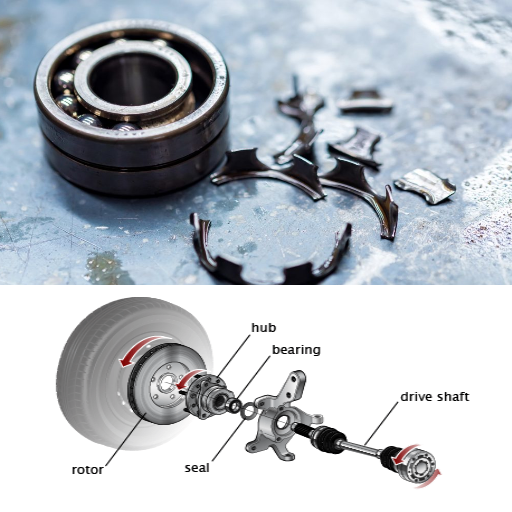
What Are the Indicators That It’s Time for a New Bearing?
In assessing whether the bearing can be replaced, I have a few significant points to base my decision on. It is noted that normal noises, including grinding, scratching, or banging, are near the bearing. This is usually the first indicator that something is wrong, most likely internally. Furthermore, I monitor for excessive vibration of the mechanisms in operation because it implies either misalignment or imbalance when this happens. Another cause is overheating, which is also expected due to the wearing-off components, causing excessive friction.
In technical terms, I can say the following symptoms warrant the replacement of the bearing if it reaches that point.
Wear and Tear: routine checking for rusting, down-pitting, flaking, or abnormal surface sounds accumulate degradation.
Chromatic Abnormality: Cavities could sometimes develop within the rolling raceway or outer seal if the bearing is not handled correctly.
Play: Significant play in the bearing, particularly with lateral and axial play, could also suggest that the bearing’s repair time is almost approaching.
Performance Deterioration: Any deficient factor in the machine’s performance, such as efficiency and speed, could cause bearing problems.
With these and several other factors, I can make appropriate conclusions concerning whether or not the bearing should be replaced for optimum performance and safety.
How Do You Know When to Replace the Hub?
I draw on several perspectives gleaned from some of the best online resources available to determine when the hub should be replaced. One of the conspicuous signs that a hub is getting overdue for replacement is the loud growling noise emanating from the vehicle, which increases with the car’s speed and suggests a potential hub-bearing failure. Excessive impacts within the hub typically cause this noise and is a safety concern. Besides this, I still look for signs such as the steering wheel vibrating and unusual sensations in the chassis, which are usually related to the imbalance or misalignment of the components. In addition, physical examination of the area around the hub for rust or damage is also critical, as spreading rust may cause the hub to be structurally deficient. So, from a technical perspective, if I detect any of the following parameters, the hub becomes a candidate for replacement:
Noise Pollution: Operational high-pitched noise or loud volume while operating the hub turning motion produces the hub component. If persistent hub noise occurs, it illustrates hub bearing malfunction.
Vibration—Shuddering: If the whole structure shows signs of harsh shuddering, the hub assembly needs to be checked in detail.
Wheel Play: Significant excessive spinning or play noticed in wheel assembly warrants hub bearing failure symptoms and recommends hub assembly replacement.
These symptoms and observations assist in the decision-making process for ensuring reliability and safety.
What Factors Influence the Lifespan of a Bearing?
As a rule, some factors determine the lifespan of a bearing, and in most cases, these factors are outlined in some of the credible online sources. Perhaps the most crucial of all is the operational environment. Bearings subjected to very demanding environmental conditions, such as too much heat, too much dirt and dust, and too much humidity, among others, are likely to fail much faster than usual. Using the correct type of bearings meant to endure the stresses above is advisable.
Equally important is the bearing load. Bearings subjected to excessive or unfit loads, whether radial, axial, or both, are prone to excessive loading, which leads to faster exhaustion of the internal parts. To enhance the bearing’s performance, the ideal type and size should be chosen.
The overall quality and maintenance of lubricants are directly proportional to a bearing’s lifespan. Proper lubrication helps to minimize internal friction and reduce wear and tear. On the other hand, one-sided lubrication can lead to heating and excessive friction, leading to failure. It is then critical that routine maintenance checks on lubrication and replacement with appropriate lubricants are carried out to promote the equipment’s normal functioning.
Centrally, in evaluating the bearing’s life span, it is crucial to consider a few significant parameters, such as load capacity (static, dynamic), rotational speed (RPM), or cooling temperature limits. It is unsurprising that, comparatively, more operating time is recorded as the applied loading conditions are followed as defined by the manufacturer.
Frequently Asked Questions (FAQs)
Q: What do we mean by wheel bearing failure, and what are the factors leading to it?
A: Wheel bearing failure occurs when the bearings that enable smooth wheel rotation become abraded or break under circumstances that have not been adequately managed. Lubrication is noted to be common appropriation, contamination, extreme load, and bad installation methods.
Q: Why do bearing damages in this sense worsen if there is any failure of lubrication?
A: When lubrication is lacking, rolling elements are made to bear abnormal loads, which causes spalling, and the bearing ultimately fails. A lack of adequate lubricant leads to prolonged rolling friction, heat generation that destroys the grease, and increased wear of the bearing.
Q: What is false brinelling, and what damage does it cause to the wheel bearings?
A: False brinelling is defined as wearing out of the bearings while in a non-movement position but endowed with motions such as vibrations. Due to this condition, such wear on the raceways can develop and lead to more overexhaustion of the wheel bearings than normal. This often occurs in bearings that are potted and inadequately lubricated.
Q: What role does the seal play in preventing wheel bearing failure?
A: The seal prevents bearing works from being polluted by outside elements such as dust and water, which may affect the integrity of the lubricant and, in turn, cause wear and tear. Proper seals also ensure that leaky lubricants do not escape from the housing, thus minimizing the possibility of bearing damage.
Q: How can improper installation lead to bearing failures?
A: Such steps can cause excessive preload on the bearings or careless alignment and support of the tower. This may lead to excessive friction, which in turn leads to uneven wear and even disastrous premature failure. To avoid all of these, it is necessary to maintain the prescribed installation procedure at all times.
Q: What are some signs that indicate a wheel bearing is failing?
A: Unusual and unusual movement of the steering wheel, jacking up the vehicle, and rotating the wheels may make a grating noise due to loose internal parts of wheel bearings and failed environmental bearing protection. When these signs occur, the bearing will need to be examined and most likely replaced; otherwise, more damage will occur.
Q: Can driving over potholes possibly damage your vehicle’s wheel bearing?
A: Yes, the accumulation of driving over potholes can produce shock loads and misalignment that may facilitate damage to the bearings. The shocks may lead to overloading of the bearings, which could lead to spalling or failures if not rectified in time.
Q: This is one way in which bearing failures can be avoided.
A: Bad maintenance practices increase the chances of bearing failures by not inspecting and replacing lubricants, seals, and parts to proper standards. It is critical to wash out the bearing case when grease has become caked over to replace old varnish and grease with corrosion-inhibiting lubricant grease.
Q: What will be your action when assisting such issues?
A: If you have wheel-bearing concerns, it’s crucial to consult a technician for an examination. They can adequately evaluate the condition of the bearings, look for evidence of spalling or brinelling, and offer advice regarding repair or replacement of the bearing for loss of production and safety issues.
UCTH213-40J-300 with Setscrew(inch)
CNSORDERNO: Normal-duty(2)
TOGN: UCTH213-40J-300
SDI: B-R1/8
SD: 2 1/2
UCTH212-39J-300 with Setscrew(inch)
CNSORDERNO: Normal-duty(2)
TOGN: UCTH212-39J-300
SDI: B-R1/8
SD: 2 7/16
UCTH212-38J-300 with Setscrew(inch)
CNSORDERNO: Normal-duty(2)
TOGN: UCTH212-38J-300
SDI: B-R1/8
SD: 2 3/8
UCTH212-36J-300 with Setscrew(inch)
CNSORDERNO: Normal-duty(2)
TOGN: UCTH212-36J-300
SDI: B-R1/8
SD: 2 1/4
UCTH211-35J-300 with Setscrew(inch)
CNSORDERNO: Normal-duty(2)
TOGN: UCTH211-35J-300
SDI: B-R1/8
SD: 2 3/16
UCTH211-34J-300 with Setscrew(inch)
CNSORDERNO: Normal-duty(2)
TOGN: UCTH211-34J-300
SDI: B-R1/8
SD: 2 1/8


















